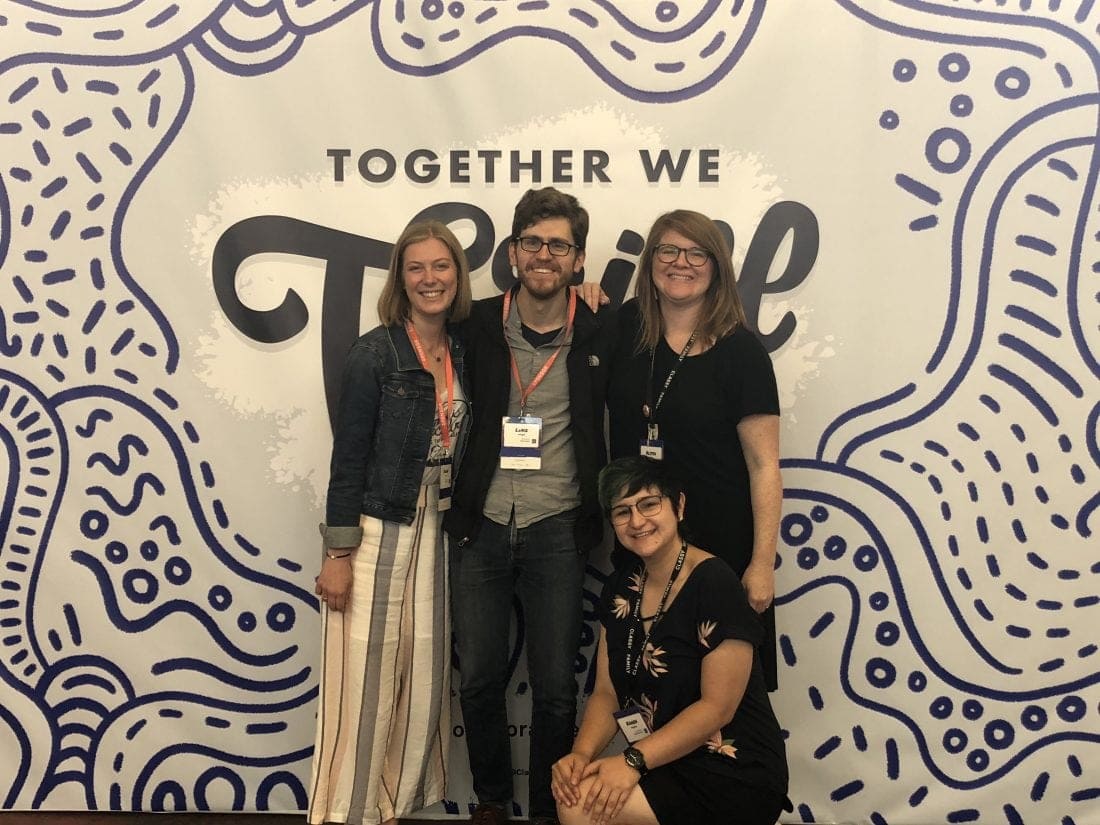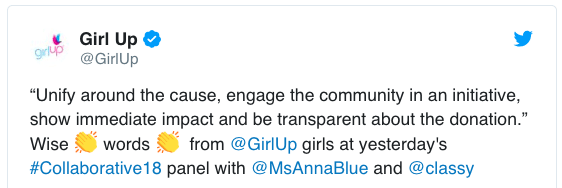
Classy Collaborative – Lessons on being authentic
At Classy Collaborative I had an opportunity to step back from the noise of digital. Classy.org’s Collaborative conference, where leaders and change-makers from the nonprofit and social good sector came together to share their knowledge through storytelling. There was one theme that stood out to me, weaving its way throughout three days of panel discussions, keynotes, intimate workshops, and many conversations: the importance of authenticity.
We talk a lot about authenticity at Media Cause. At Collaborative, we hosted a Digital Detox Lounge – a way for conference goers to take a break, ditch their devices, and talk with each other face-to-face without a phone as a crutch or barrier. We thought the idea resonated with our core values, while also being a tad bit ironic as a nonprofit digital marketing agency.
Little did I know that this #digitaldetox would make the entire conference experience even more meaningful and validating, for me and for Media Cause as an organization. Here are my main takeaways on authenticity, many reflecting the same values that make me so excited and energized coming to work every day.
1. Be authentic as a leader.
By doing so, you empower others to be their authentic selves. There’s value to being vulnerable, especially when it comes to hiring and building a culture based on equity and mutual respect.
We had the immense privilege of hearing from Patrisse Cullors, Co-Founder of Black Lives Matter. She spoke about courage – particularly, the courage to be an authentic leader:
“As an authentic leader focused on social change, you need to specify what type of leader you’re trying to be. I’m interested in being a leader who creates other leaders.”
Use authenticity to embolden others to take risks and be willing to fail. As Patrisse Cullors also said, “Part of organizing is reminding people that they can be courageous enough to be risk takers.” Leadership is mentorship. It’s practicing humility, and giving credit to those who put in the work. The strongest leaders don’t always have to be the loudest voices in the room.
Looking for an example of authenticity from a leader? Check out this very real post from our VP of Creative and Brand Strategy, Amy Small, on why she joined the social good sector.
2. Be authentic as an organization.
It isn’t enough to be authentic as a leader – authenticity must permeate an organization’s entire structure and core values. Organizations are social organisms made of people. There is a critical connection between wellbeing and growth. Media Cause recognizes this and has put this concept into practice with a strong emphasis on staff wellbeing. Every person is given a personal wellness stipend and is allowed to define what wellness means to them. It could be painting or pottery classes. Sessions at the gym. Learning a new language.
Authenticity also means having those tough conversations. I had the privilege of listening to a powerhouse panel of leaders in the sexual violence space talk about how #MeToo is changing nonprofits. As Sarah Beaulieu of The Uncomfortable Conversation put it, “Culture is the set of conversations you choose to have or not have as an organization.” Authenticity is accountability. Authenticity is transparency.
“If your employees don’t know and understand how you’re handling misconduct they will lose trust in the organization, leave entirely, or go to the press”- How #metoo is changing #nonprofits #Collaborative18
– Andi Dankert (@AndiDankert) June 14, 2018
3. Be authentic with your supporters.
Authenticity is just as important outside of the organizational structure. Supporters can see through the BS. This is especially true of the younger generations, who are more and more selective towards the brands they use, and the organizations they donate to and volunteer for.
In a panel discussion on new trends defining nonprofit revenue, growth, and sustainability, motivating young supporters to give was a topic that generated significant interest. One of the most important takeaways was that millennial donors value 3 things: authenticity, meaning, and impact. #1 is authenticity. We also heard from a panel of extremely impressive and well-articulated Gen Z-ers from Girl Up, who echoed these sentiments:

Being authentic with supporters also means enabling your supporters to be authentic, and perhaps releasing a bit of control. Put supporters at the center of your model. Solicit feedback often. Share your challenges and play to their strengths. Moms Demand Action embraces this model, letting their supporters ‘run with it’ when executing crowdfunding and peer-to-peer campaigns. This line of thinking follows the community-centric model that we’ve been talking about since at least 2014.
4. Use authenticity in your storytelling, and empower others to tell their stories.
“People give to people, not to campaigns.”
Supporters would rather hear one powerful story than see data on why or how your organization makes an impact. I was particularly moved by Ryan Letada of NextDayBetter, an organization that works with immigrants, migrants, and refugees to empower them tell their stories. His perspective on storytelling really resonated with me: “Part of storytelling is just sitting with someone. With respect, vulnerability, and empathy.” There’s that word vulnerability again.
Storytelling is the art of deep listening. A powerful story is an emotional journey for the audience and for the person who is part of that story. We must empower the most marginalized of populations to share their stories, and be authentic about our shortcomings in amplifying those stories. In doing so, we create a culture of sharing based on trust rather than fear of speaking up and speaking out. This brings us to takeaway #5.
5. Inclusivity is paramount to authenticity.
This should be obvious at all levels, but is often overlooked in the broader context of collective impact. During Alaa Murabit’s keynote, we learned that the most cost-effective and practical solution to climate change is the combination of girls’ education and women’s reproductive rights. This frame of mind should be applied across industry sectors and causes, as no societal problems exist in a silo. They are interconnected.
“We work against ourselves when we work alone.” – Alaa Murabit, UN High-Level Commissioner
One single organization can’t be all things to all people. Together, however, we have the chance to achieve monumental things – across sectors, across political divides.
Authenticity is in itself a privilege. Think, too, about the underrepresented voices in our society. What are we collectively doing to amplify these voices? Are their voices influencing decisions made at the organizational level? If not, why not?
6. Don’t forget to take care of yourself.
“The care piece is crucial. As it stands, the self is second. It should be first.” – Patrisse Cullors, Co-Founder of Black Lives Matter.
Patrisse Cullors said it best. It is so, so critical to focus on our own wellbeing as part of our ability to do the work. As a rape crisis counselor and advocate in my volunteer life, I participate in a lot of conversations about self care. I was very encouraged to see this topic elevated by speakers at Collaborative, and to see it becoming more integrated into conversations about our working lives.
In closing, I’ll say look up. Ditch that device. Experience what’s going on in the physical world around you. Talk to people. Listen to their stories, and don’t be afraid to share yours. Take care of one another. Who knows – maybe one day, together, we can change the world.